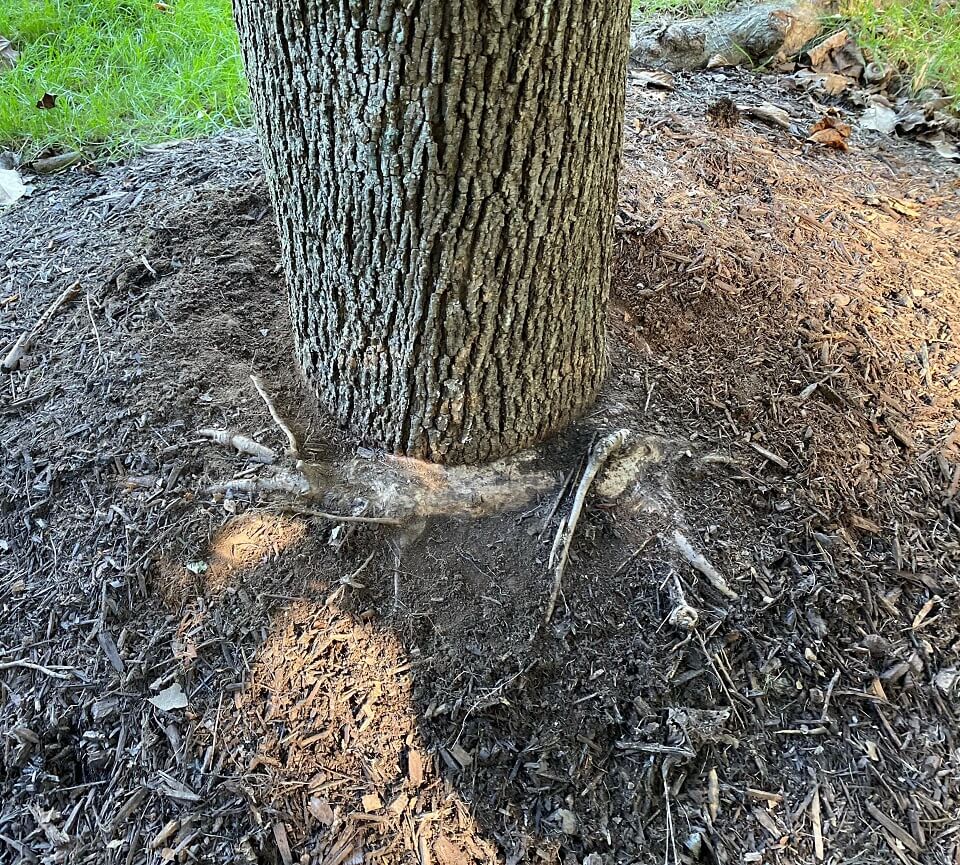Moving comes with its ups and downs. This can vary depending on the prior tenant's or owner's gardening expertise.
A Redditor posted a concern about their landscaping hand-me-down on r/tree subreddit.
The two photos show a mulch volcano on an otherwise healthy looking Norway maple.

"Should I dig it out and cut roots or leave it be?" the Redditor asked.
One lengthy reply had several suggestions after relaying the bad news that the tree was beyond saving. The tree would either die from root strangulation or shock from root removal.
The comment also raised the question of whether or not the type of tree was worth the trouble as the Norway maple is considered an invasive species for its aggressive seed production and ability to outcompete native woodlands.
The comment advised checking in with the local state college extension office or searching their website.
Another option is to consult with a local ISA arborist or a consulting arborist for an on-site evaluation.
"I guess I'll just let nature run its course," the original poster replied.
This is evidence of how important correct mulching is to the health, development, and survival of your tree. When mulching goes right, it prevents weeds, conserves water, benefits the soil, and protects plants.
Mulching twice a year is recommended: in late spring and early fall. All that is required is a 2- to 3-inch layer around the base, making sure none of the mulch is piled against the trunk or stem of the plants to avoid rot.
Avoid mulch volcanoes at all costs, and leave the root flare exposed so the plant is set up for success.
Ensuring your trees and plants are healthy is a simple and powerful way to contribute to a cooler, greener planet for future generations.
Join our free newsletter for easy tips to save more, waste less, and help yourself while helping the planet.









